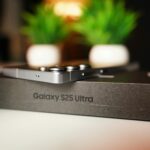Choosing the right headset is crucial for conference interpreters who rely on clarity, comfort, and reliability during long sessions. This 2025 guide explores the best interpreter headsets on the market, from professional booth gear like the Sennheiser HMD 26-II to remote-friendly options like the Jabra Evolve2 65 Flex. Learn what features matter most, sound quality, ergonomics, noise cancellation, and microphone performance, plus practical tips from the interpreting community. Invest wisely, and your headset becomes a trusted partner in delivering flawless interpretation.
Your headset is more than just equipment, it’s the bridge between voices, cultures, and understanding. The right choice empowers interpreters to perform with confidence and clarity.
Arsene Tuye
Why Choosing the Right Headset Matters
In the world of conference interpreting, clear communication is everything. Whether you’re working in simultaneous interpretation booths at international summits or providing remote interpretation services online, the headset you use plays a critical role in your performance.
But with so many headset options on the market, ranging from consumer-grade models to professional interpretation gear, how do you choose the right one?
In this article, we provide expert guidance and practical suggestions for conference interpreters seeking high-quality, comfortable, and reliable headsets in 2025.

1. What Interpreters Should Look for in a Headset
Conference interpreting demands long hours of focus, often in high-pressure environments. Here are the key factors to consider when choosing a headset:
Sound Quality
- Clear audio reproduction is essential to ensure accurate interpretation.
- Look for headsets with wide frequency response and noise isolation.
Comfort & Ergonomics
- Interpreters often wear headsets for 6–8 hours at a time.
- Lightweight, over-ear models with padded cushions are ideal.
Noise Cancellation
- Passive noise isolation is good, but active noise cancellation (ANC) can be a game-changer, especially in noisy venues or shared booths.
Microphone Quality
- If using a headset with a mic (for remote or hybrid settings), ensure it offers noise-canceling capabilities and crisp voice pickup.
Wired vs. Wireless
Wireless may be suitable for RSI (Remote Simultaneous Interpretation), but latency and battery life must be considered.
Wired headsets are still preferred for simultaneous interpreting due to zero latency and stability.
2. Best Headset Suggestions for Conference Interpreters (2025)
1. Sennheiser HMD 26-II
Why it’s great:
- Broadcast-grade sound quality
- Extremely lightweight (under 200g)
- Adjustable noise-attenuating microphone
- Designed specifically for long-term professional use
Perfect for: Professional on-site interpreters, simultaneous booths
2. Beyerdynamic DT 297 PV MKII
Why it’s great:
- Excellent speech clarity and ambient noise rejection
- Rugged build with replaceable parts
- Comfortable for extended sessions
Perfect for: Conference settings and hybrid environments
3. Jabra Evolve2 65 Flex (for RSI)
Why it’s great:
- Wireless flexibility with strong audio performance
- Dual connectivity (USB-A/C + Bluetooth)
- Active noise cancellation (ANC) + noise-canceling mic
Perfect for: Remote interpreting platforms (Zoom, Interprefy, KUDO)

4. Logitech H390 USB Headset (Budget Option)
Why it’s great:
- Affordable, plug-and-play
- USB connectivity with digital stereo sound
- Built-in noise-reducing mic
Perfect for: Students, part-time interpreters, or low-cost RSI needs
4. Tips from the Interpreting Community
- Always test your headset before live interpretation sessions. Even the best gear can fail without a sound check.
- Invest in a backup headset, especially if you’re working remotely.
- Pair your headset with high-quality audio interfaces (like Focusrite Scarlett Solo or Behringer UM2) if required by your setup.
- Consider replaceable ear pads and adjustable headbands for long-term comfort.
“Your headset is as important as your voice, it’s your connection to both the speaker and the listener.”
— Professional Interpreter, UN Conference Team
5. Remote Interpreting: A Changing Landscape
As Remote Simultaneous Interpretation (RSI) continues to grow post-pandemic, interpreters are relying more on digital platforms and home setups. A professional-grade headset ensures:
- Better audio quality for clients
- Reduced fatigue due to clearer sound
- Higher credibility and client retention
Even when working from home, investing in quality equipment sets you apart in a highly competitive market.
Your headset is more than just equipment, it’s the bridge between voices, cultures, and understanding. The right choice empowers interpreters to perform with confidence and clarity.
Arsene Tuye
Choose a Headset That Matches Your Needs
The best headset for a conference interpreter depends on your work environment, budget, and comfort preferences. Whether you’re interpreting on-site, online, or a mix of both, the right headset can improve your accuracy, reduce fatigue, and elevate your professional image.
In 2025, interpreters have more options than ever, choose wisely, and your headset will become a trusted partner in your interpreting journey.
FAQs About Interpreter Headsets
Q: Can I use consumer headphones for conference interpreting?
While possible in informal settings, professional interpreting requires clearer sound and better microphones than most consumer headphones provide.
Q: Are wireless headsets good for interpreting?
Only for remote work, and even then, they must have low latency and stable connectivity. For live booth interpreting, wired is preferred.
Q: What’s the difference between a headset and headphones?
A headset includes a microphone, essential for RSI or two-way communication. Headphones are listen-only.
Call to Action
Still unsure which headset is right for you? Explore top-rated interpreter headsets on platforms like Amazon, B&H Photo, or professional gear retailers. Investing in the right headset is investing in the quality of your voice, and your career.













